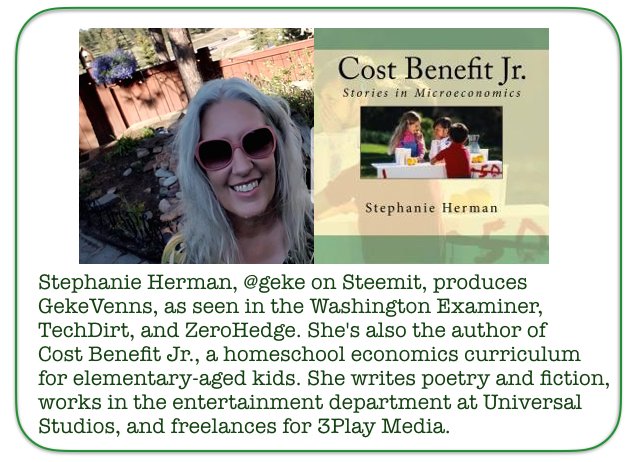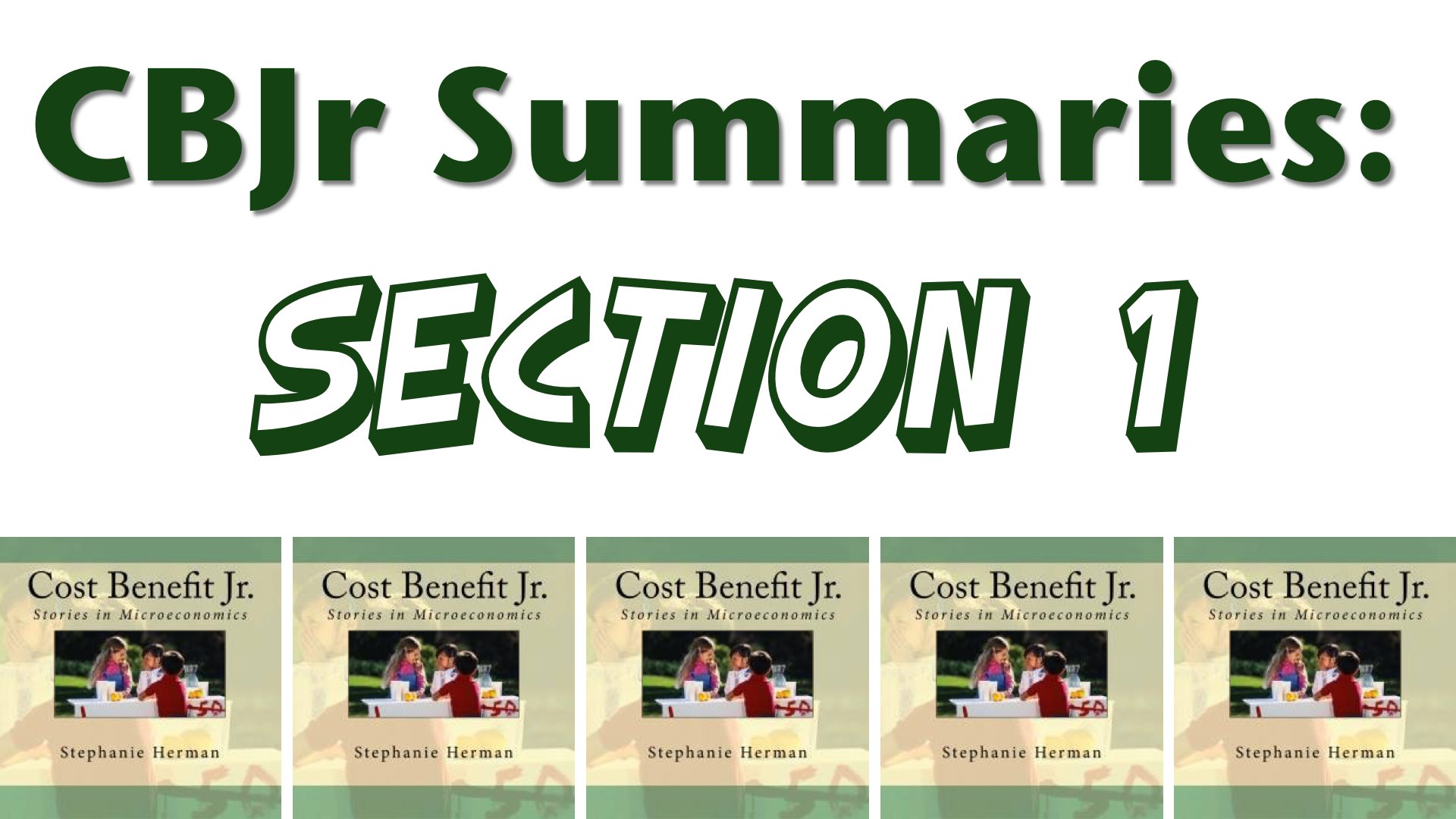

Cost Benefit Jr.™: Stories in Microeconomics (available on Peerhub, which accepts SteemDollars) is a literature-based curriculum in microeconomics for elementary-aged kids. Students as young as eight can learn complex concepts like supply & demand, opportunity cost, and diminishing marginal utility when they’re presented in simple stories. Each weekly story and quiz will take the average 4th grade student 20 to 30 minutes to read and complete. The curriculum is meant to cover a normal school year, and is ideal for homeschoolers or as a quick & easy supplement to classroom learning.
Section 1: Keira's Allowance (price, cost, and value)
In the first section, students meet a girl named Keira who is trying to make a decision. She's flipping through a toy catalog and finds three items she really wants. How to decide? Keira begins by learning about how we rank items according to our own subjective values. She learns the function of an item's price and how the price can be a dollar amount or a barter equivalent. She learns how production is an activity that makes it possible, even for kids, to earn the things we want.
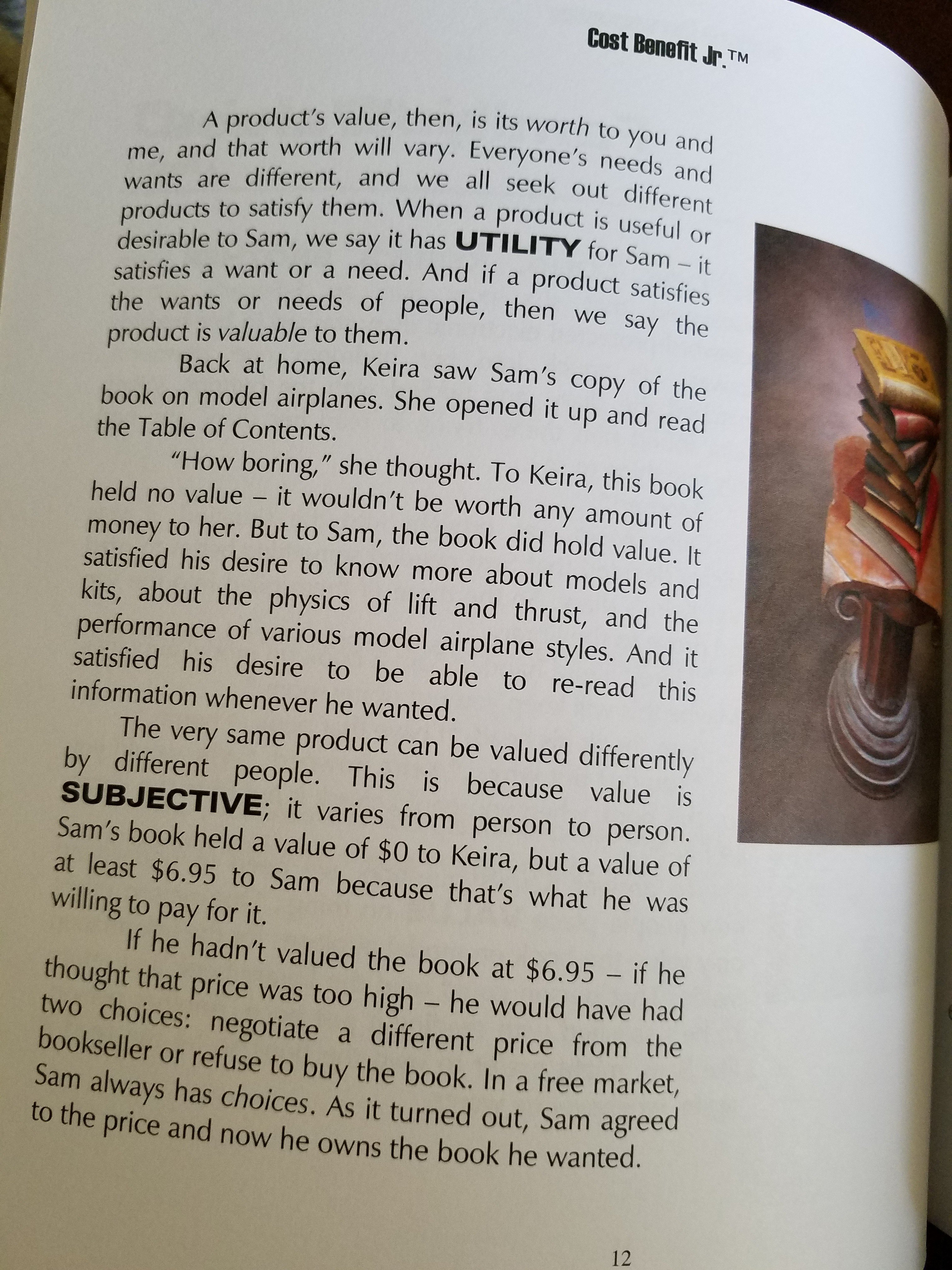
Ultimately, Keira faces a dilemma: she can only buy one of the three items she wants. And making that choice produces a cost all its own: an opportunity cost. This cost involves the next-best item given up in choosing the item you want. The concept of an opportunity cost is eye-opening to kids, and helps them make better decisions not only in toy stores, but in life.
Section 1 spans three chapters. Each chapter is a self-contained story with a quiz at the end. At the end of the Section is a Wrap-Up test. After reading the stories, students are equipped to answer several questions at the end of Section 1: What is utility? Do people always place the same value on a product? What makes an economic exchange fair?
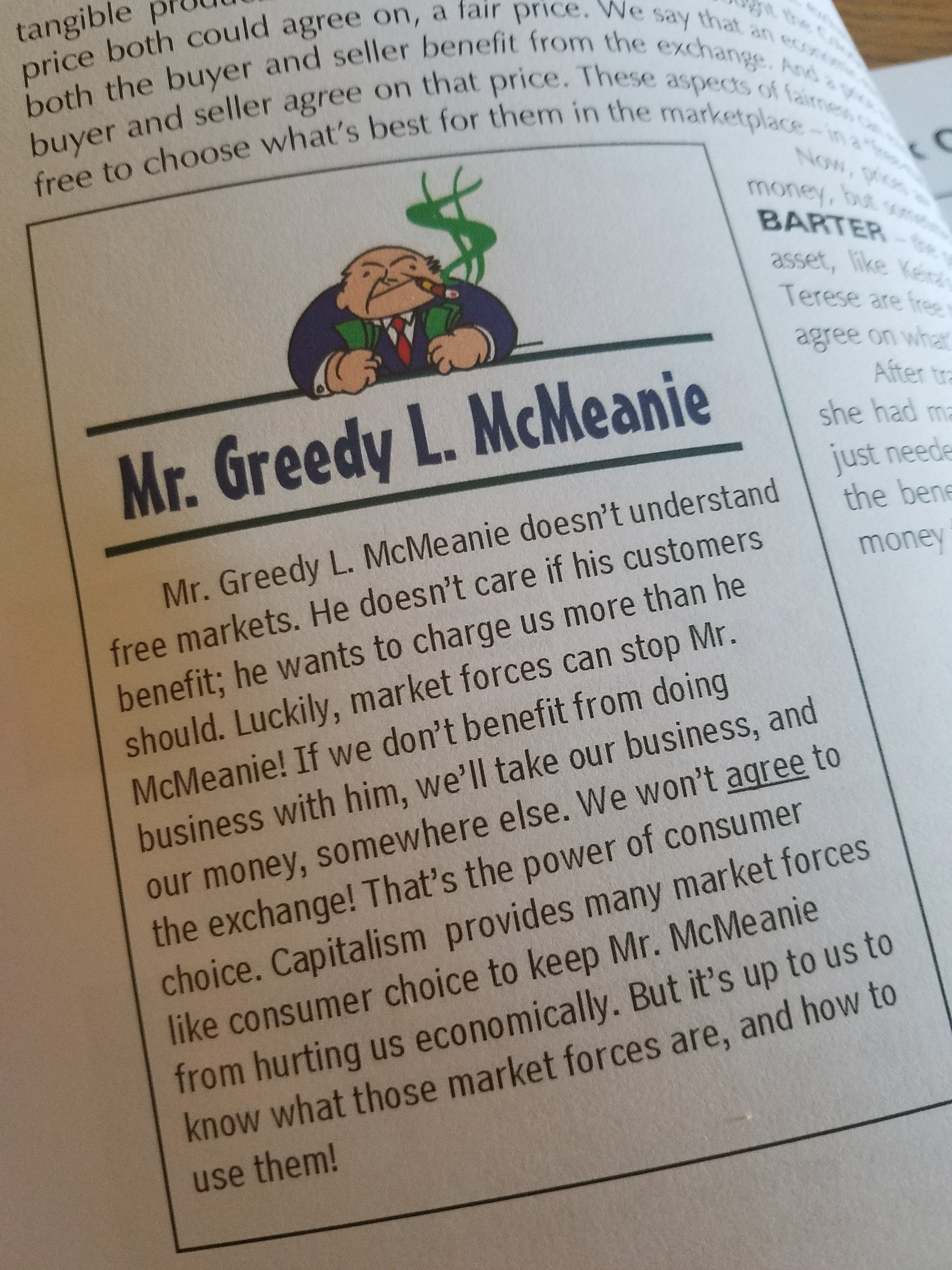
Each Section also includes a peek into the world of Greedy L. McMeanie, a corporatist fat-cat who tries to find sneaky ways around the market forces that keep greed in check. The purpose of this cartoony character is to show kids, right off the bat, that corruption isn't a problem with capitalism or a failure of markets, as we're often taught. Corruption is actually the result of attempts to avoid the market forces of capitalism that keep greedy, fraudulent behaviors in check.
McMeanie doesn't realize that free markets demand voluntary exchange and that means that both parties in an exchange must agree to participate. But it's up to us to learn how markets help us and help society and that's why I wrote Cost Benefit Jr™.
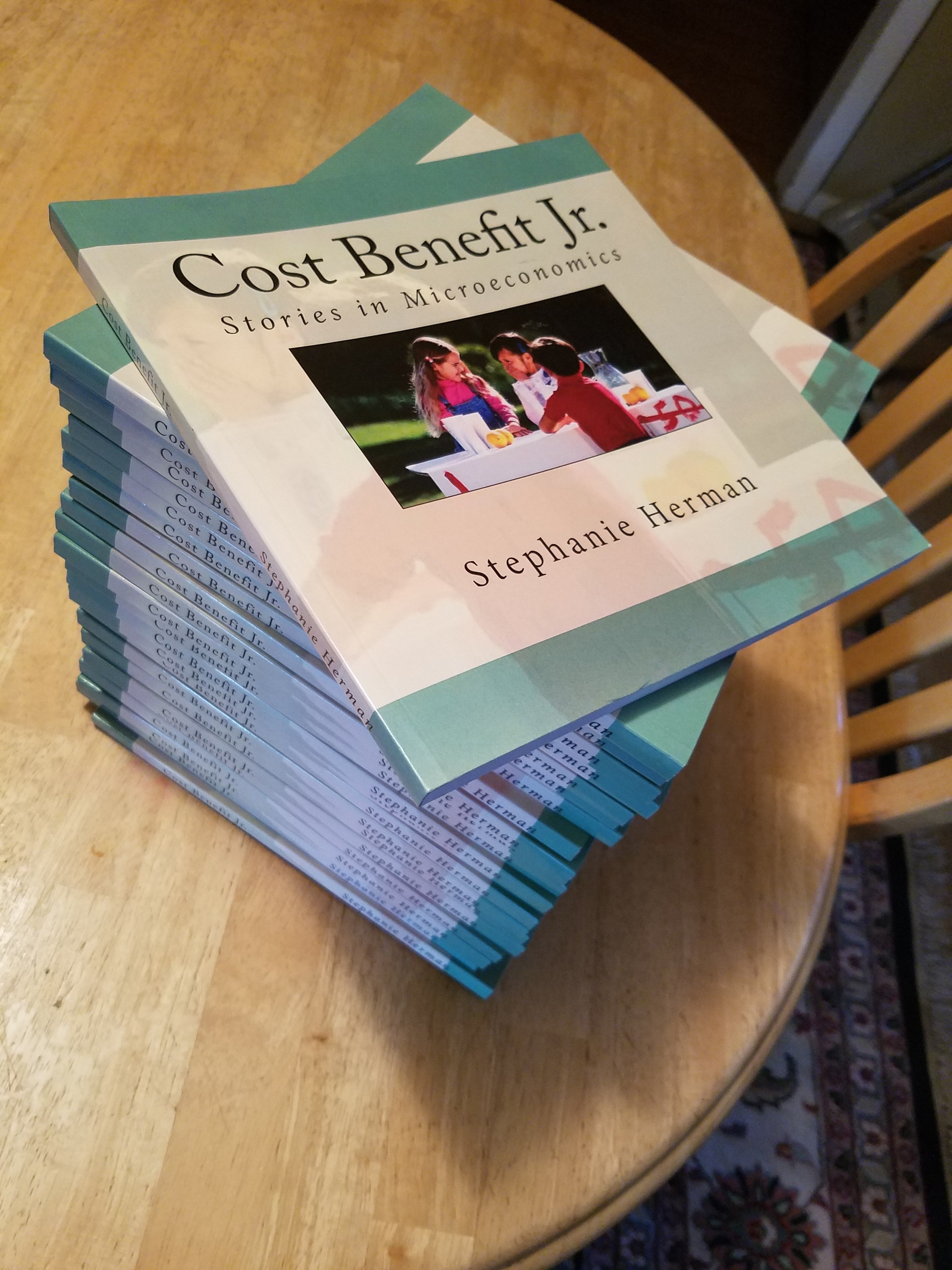
Stay tuned for a contest coming soon in which you can win a copy of Cost Benefit Jr.™ for your child! I'll be giving away five copies to contest winners who share what they hope to teach their kids about economics and decision making.
Participants will be asked to share their own stories in the comments of a post announcing the contest, after all eight sections of Cost Benefit Jr.™ have been summarized in individual posts here on Steemit. So look for that contest sometime in the month of November!
